Muses: A Look Back on The It Girls of The 1960s
- madalene hartl
- May 8, 2020
- 6 min read
Before the age of supermodels, there were muses: women whose individuality inspired creatives in fashion, music, and pop culture. Though opinions are mixed, many do not believe supermodels truly emerged as we know them today until the 1980s and 90s with the emergence of icons such as Linda Evangilesta, Cindy Crawford, and Naomi Campbell. The fame and relevance these women obtained is legendary due to their influence on society. In a time before social media, their lives, viewed as luxurious and outrageous, remained shrouded in mystery and public fascination, allowed them to reach levels of stardom that were just beginning to emerge in this time period. Not only are they remembered as significant figures in fashion history, their legacies have been drawn on for inspiration since their emergence into the public eye: this is what makes them muses.These decade-defining it girls continue to reign as a source of inspiration to this day, and have left legacies in the pages of Vogue, on the lips of music legends, and in the brushstrokes of iconic artists.
Twiggy is one of the most recognizable figures from this era, with her signature cropped blonde hair, wide eyes, and boyish figure. She was only sixteen years old when she got her big break. It all began when she got her hair cut short at a salon in London, and the owner decided he wanted her headshots on the wall. A fashion journalist for the Daily Express saw these photos and arranged to meet with her, and one short month after her article in the Daily Express, Twiggy was modeling for Vogue.
Her name, stemming from her childhood nickname “Twigs,” was fitting for her small frame and androgynous look, which was perfect for the styles emerging at the time. A-line silhouettes and boyish looks became popular as Twiggy became a worldwide phenomenon, a divergence from the hyper-feminine looks of the 1950s. She was often criticized for her waifish figure, as people characterized her adolescent frame as an unhealthy beauty standard for women; and speaking as a former naturally twiggy-skinny sixteen year old, it is a much more awkward experience than what was displayed on the cover of Vogue. She is an icon that continues to be emulated by makeup artists and designers all over the world, and it’s amazing that she has been a part of pop culture; acting, singing, talk-show hosting, and more, to this day.
Pattie Boyd was THE muse of the 1960s. After graduating highschool, she moved to London and started working as a shampoo girl in Elizabeth Arden’s salon. Her origins are very similar to Twiggy in the sense that a staffer for Honey Magazine discovered her working at this salon, and after she appeared in the pages of Honey, her career quickly took off, landing her in UK Vogue, Elle, Vanity Fair, and so on. She became known as the epitome of the “British look:” a youthful aesthetic that emerged from London and helped to define the ‘60s--mini skirts, long hair, and wide eyes--just as much as hippie culture did in the United States. When I say THE muse, I mean she was the inspiration for some of the most influential artists of the time, including swinging ‘60s fashion designer Ossie Clark, who is revered by modern day designers for his vintage designs and prints. People looked up to her and her glamorous lifestyle, which only intensified after her marriage to George Harrison of the Beatles, inspiring songs such as “I Need Someone” and “Something.” After they divorced, she married another music legend, Eric Clapton, inspiring songs such as “Layla” and “Wonderful Tonight.” Not only that, other legends of the time, like Miss Twiggy herself, looked up to Boyd as an influential figure, as she is still thought of today, immortalized in the world of music and fashion.
Hiroko Matsumoto was the first Japanese model in French high fashion. She became well-known after Designer Pierre Cardin took a trip to Japan and fell in love with her. Cardin is known for his space-age, geometric designs. After working for Christian Dior, he began his own fashion house, experimented with unisex looks, and was an influential part of the mod fashion scene during this time period. She was known in the industry as Miss Hiroko, and stood out for her excessive, whimsical and experimental mod sense of style. She appeared in Vogue and modeled for Dior, as well as being a part of a François Truffaut film, among others. Her role in the fashion industry was not just that of a muse, but she also paved the way for Asian representation in the world of Western fashion and film. Matsumoto overcame stereotypes and is truly an inspiration, not only to artists of the time, but to anyone looking to make a change in the world.
Donyale Luna is widely recognized as the first African American supermodel, and was the first Black model to appear on the cover of Vogue. Luna was born in Detroit and was known since childhood to be very eccentric. Shortly following the passing of the Civil Rights Act and her discovery by British fashion photographer David McCabe, she moved to New York city to pursue a modeling career with only McCabe’s phone number and a dream. Standing 6’2” with stunning chiseled features and piercing eyes, she quickly took the modeling world by storm and began a lavish lifestyle, being photographed alongside Bob Dylan, another legendary muse Jean Shrimpton, and partying with the likes of Sammy Davis Jr and Verushka. She was labeled as an alien from outer space, Nefertiti’s reincarnate, and served as an inspiration to many, including Andy Warhol. She became especially successful after she moved to Europe, becoming an international star and one of the most in-demand models in the world. World-renowned painter Salvador Dali proclaimed her one of his muses. She struggled somewhat with her role as a symbol for diversity in the world of fashion, even claiming she was not from Earth but from Mars; however, she is incredibly important for opening the door for black women in this industry, and doing it with style. Luna’s beauty and energy was truly one of a kind, and she is a LEGEND in the modeling world.
Jane Birkin’s name is instantly recognizable. If you don’t know the woman, you definitely know the luxury handbag. Born in England, she began her career as an actress in the Swinging London era and met French visionary Serge Gainsbourg while filming a movie, beginning a decade long relationship that would result in their collaboration in film and music. In 1969, they released a song that was deemed so sexual it was banned in Italy, the UK, and Spain, yet still managed to chart. She was not only his muse, but the inspiration for the Hermes Birkin Bag, which like the woman, became a symbol of wealth and elegance. Birkin became internationally famous due to her effortlessly chic, elegant, yet laid back sense of style and is widely considered the epitome of late 1960s fashion and glamor. She has appeared on the cover of Vogue and numerous other notable fashion magazines. Her style was, and continues to be, revered and replicated, a cool-girl aesthetic that is truly one of a kind.
It would be remiss if I did not mention other legendary muses of the 1960s such as Edie Sedgwick, Bridget Bardot, Cher, Peggy Moffitt, Jean Shrimpton, Penelope Tree, etc etc. These muses were at the center of pop culture in the 1960s, a time known as the introduction of psychedelia, new space-age designs and experimentation in many aspects of life. They broke boundaries at a time when fashion was becoming much more experimental and full of expression, and opened doors for more iconic figures in the future. Their influence is cemented by current models, designers, and publications constantly referencing and building on the aesthetic these muses helped to establish, such as supermodel Camille Rowe referencing Twiggy as an inspiration, or photoshoots such as Zendaya in Marie Claire Sept. 2018 issue. CR Fashion Book recently featured Kim Kardahian, Naomi Campbell, and Cher as a trio, whose influence spans over fifty years in total, and unites legends of three different generations as one in modern fashion. Remembering muses is just as important as remembering the creations they inspire, because as fixtures in the public eye they are not only a vessel for style innovations, but inspire the next generation of creatives, symbolizing the push into the future.
_edited.jpg)

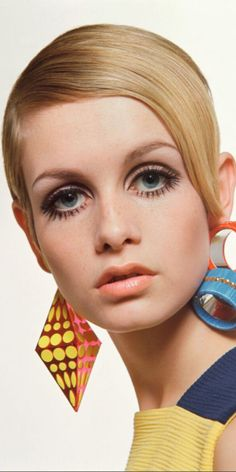

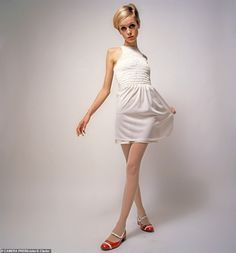

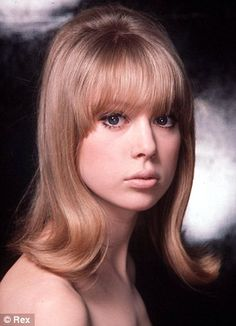

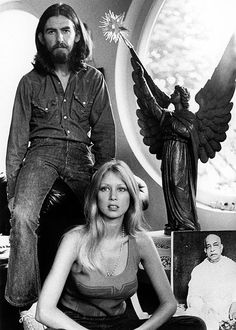

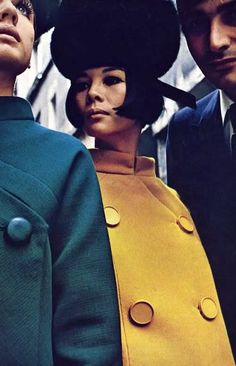

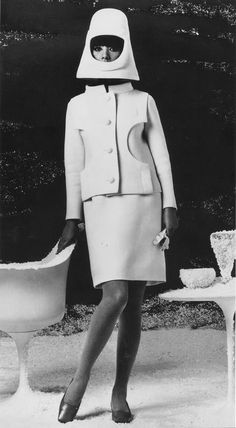



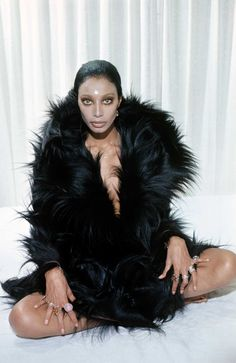



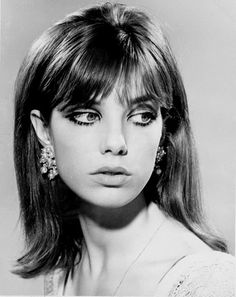


Comments